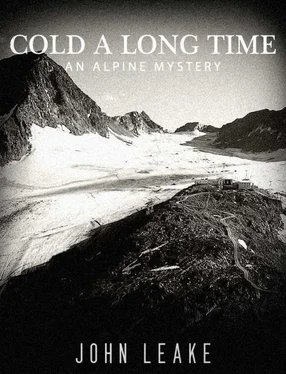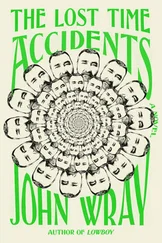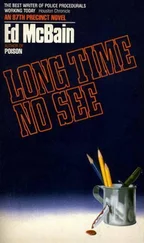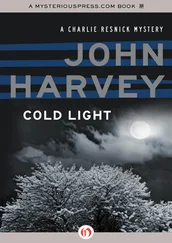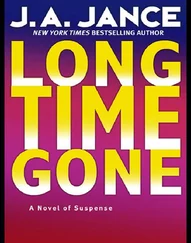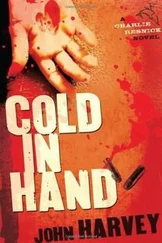Chapter 9: “The snowboard and boots have been returned.”
Finally, in February 1990, they received two documents from the Canadian Embassy in Vienna. The first was a copy of a letter written by District Gendarmerie Commander Hofer to Consul Thomson, dated October 18, 1989. Why had External Affairs taken four months to translate and forward it?
Though Hofer stated that “all circumstances of the case indicate that McPherson (sic) became the victim of an alpine accident on 09 August 1989 on the Stubai Glacier,” he did not record the circumstances—not even Duncan’s last known location. The “Stubai Glacier,” is, after all, the trade name of a large ski area encompassing five different glaciers. Hofer didn’t mention that only one of them (the Schaufelferner) was open on August 9, and that Duncan was last seen on its slope at 2:30 P.M.
In spite of his vague conclusion, Hofer told Thomson that the police had nevertheless accomplished the following:
As a result of various search measures, the private car (license number N-EH 204 (D) which was last used by McPherson was located on 20 September 1989.
Investigations conducted by the local gendarmerie office in charge gave rise to the assumption that the missing person visited the Stubai Glacier on 09 August 1989.
Innsbruck Federal Police Directorate had established that McPherson had spent a night in an Innsbruck Youth Hostel.
Based on new information, a search notice was broadcast by the ORF (Austrian Television) in their show “Tirol Heute” (Tyrol Today) on 20 September 1989.
In reality, Lynda and Bob had searched for his car. They established the fact ( not the assumption) that Duncan had visited the Stubai Glacier on August 9, 1989, and that he’d spent a night in an Innsbruck Youth Hostel. They and the Innsbruck Hockey Club organized the missing person broadcast on Tyrol Heute ; the police tried to obstruct it by invoking privacy laws. Altogether, Commander Hofer’s letter was highly misleading, for by asserting that his officers had diligently investigated Duncan’s disappearance, he gave the Canadian government the impression that nothing was left to be done.
Accompanying Hofer’s letter was a document titled “Final Report of the Security Directorate for Tyrol for the Austrian Ministry of Foreign Affairs.” Though mostly just a list of searches, noting the number of men, dogs, and equipment used, it did contain one passage that seemed to leap off the page:
It should furthermore be mentioned that the snowboard and boots, which Duncan MacPherson rented on 09 August 1989, have been returned. Exactly who and when the items were returned cannot be determined.
Lynda was stunned. When had they determined this, how had they determined this, and why had no one in External Affairs told her directly, given her request that it be clarified? It was by far the most important piece of information they obtained since finding Duncan’s car. That his equipment had been returned meant that he had certainly come off the slope. This indicated that he’d gone back down to the valley on the afternoon of August 9.
What happened to him after that?
The American journalist John Dornberg found the amnesia theory compelling. He’d met the MacPhersons through his friend Felicity Lamb, and then kept abreast of their search. When he learned about the foreigner wandering from hut to hut, it reminded him of stories he’d heard about amnesiacs showing up in towns where they were strangers, a mystery to themselves and to everyone else. Dornberg theorized that after Duncan called Ron Dixon on August 10, he went for a hike, fell, and hit his head. The resulting concussion caused him forget who he was, so he wandered the Stubai Alps, spending nights in huts, perhaps descending to a village to stay in a boarding house.
Lynda didn’t know what to make of Dornberg’s hypothesis. She thought it unlikely that Duncan could go for long in the Stubai Alps without being recognized as the missing Canadian. Then again, the hut manager said he hadn’t known about Duncan until he saw the missing person notice in Innsbruck on October 10.
No one in this nightmare makes sense , Lynda thought. It had started with Ron Dixon, who never called to tell her that Duncan hadn’t showed up for the meeting in Scotland. After Sean Simpson broke the news to her, she called the team manager, who confirmed that Duncan hadn’t arrived. As for Dixon, he’d apparently had little to say about it, and had simply flown back to Vancouver. And yet, in a subsequent press interview, he stated that Duncan was obviously a responsible young man who’d bought his ticket to Glasgow well in advance and called four times from Germany to confirm their meeting. If Dixon believed that, why hadn’t it occurred to him that his coach’s failure to show up was cause for concern? It was as if he hadn’t really needed his coach, and therefore didn’t care. But if that were the case, why had he offered Duncan the job in the first place?
Lynda inquired about Dixon and learned that no one seemed to know much about him, though many had heard rumors. People said that “Ron Dixon” wasn’t his real name, but an alias; that he’d served time in prison for manslaughter; that he was a master of double-dealing in his real estate projects. Most disturbing was Lynda’s perception that people were afraid of him. All of her sources insisted on remaining anonymous, as if frightened of retaliation. Could Dixon have had something to do with Duncan’s disappearance?
Yet another perplexing thing was the statement in the Security Directorate report that, “Exactly who and when the items [snowboard and boots] were returned cannot be determined.” This implied that the police had reason to believe that someone other than Duncan had returned the items. Why?
Duncan had been with another man when he’d purchased the cassette from the Innsbruck music shop. Who was the other man? This reminded Lynda that he’d been approached by a CIA recruiter, but had turned down the proposal because it required changing his identity and separating from his family. Had he in fact taken the offer? If so, it meant that he’d lied to his parents and left them to worry themselves to death. She didn’t think he would have done such a thing, but she still tried to figure out the likelihood that the man who’d approached him had indeed been a CIA recruiter, and not an imposter.
European hockey coaches and players (like Duncan’s friend George Pesut) frequently travelled back and forth across the Iron Curtain, which made them potentially attractive recruits as intelligence couriers or even collectors. Likewise, many agents travelled to Austria—a neutral country situated between Eastern and Western Europe—to transfer information, and over the years, several had been kidnapped or murdered. On July 13, 1989, three representatives of the Democratic Party of Iranian Kurdistan were assassinated in Vienna, apparently by Iranian agents.
Yet even if the CIA had persuaded Duncan to take a deep cover position, surely it would have allowed him to tell his family. The risk of his parents spilling the beans was far preferable to their publishing his name and photograph in newspapers across Europe in a desperate attempt to find him.
Shortly after the Berlin Wall came down, a Canadian tourist in Moscow spotted a young man who she thought to be Duncan based on photos she’d seen in the papers. He was sitting in a popular bar with a Russian-looking woman. Though the tourist was too shy to approach him, she snapped a photo and sent it to Lynda and Bob. The man in the image resembled Duncan, but wasn’t him.
Lynda contemplated the possibility that he’d been recruited as a courier while retaining his identity as a coach in Scotland, and that his first assignment had been to go to Austria to receive information and then to deliver it to someone in the UK. Had the information been especially valuable, it was conceivable that he was murdered for it. Or was it? The scenario seemed to belong more to the movies than reality, but Lynda couldn’t help wondering.
Читать дальше
